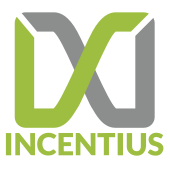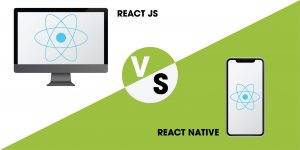How to Scale Your SaaS Startup? Marketing May 14, 2021
Software as a service or SaaS, is a software licensing and cloud service model. Using SaaS, you can connect to a cloud-based app over the internet. It is also referred to as-
In SaaS, instead of downloading and installing an app, you use that app over the internet. Traditional business software tends to be more costly than SaaS. You don’t have to manage technical complexities instead, just log in and start your work. Your IT department too can focus on other main activities instead of handling software issues. SaaS provider maintains servers, databases, data, and other software. This software allows users to use and access their products. You can customize the application’s features. SaaS companies divide their products into two bases, it depends on whether the company is B2B or B2C.
- B2B SaaS: It means the SaaS company selling their software and services to any other company as a service. They are not connected with the final user or consumer at all. They focus on marketing, sales, and customer service.
- B2C SaaS means the SaaS company selling their software and services to people for personal use. They target the final users. They tend to focus on networking sites or specific communities etc.
SaaS Companies provide applications and services to consumers through a subscription model. A. They offer various subscription plans to their clients. The plans depend on the functionalities they want. Some SAAS companies offer many applications within their product. Different subscription plans give access to different types of services. The SaaS market in India is huge and growing rapidly. According to Nasscom – the revenue of India’s Software-as-a-Service (Saas) industry reached $3.5 billion in FY2020. It has the potential to grow by about $13-$14 billion in 2025. India currently has more than 1000 SaaS companies. Chennai is the SaaS capital of the Nation.
Benefits of SaaS Companies
To SaaS customers
- Low cost: You don’t need to invest in any hardware to build your product. You can log in to the app with a minimal subscription fee and set it up for your own use. You only pay for the features you use. If you need the service temporarily, you subscribe to it only for that time.
- Scalability: If you want to expand your business, you can do it with a SaaS partner. You don’t have to buy any extra hardware for that. You can upgrade that with a rise in the subscription fee.
- Easy access: SaaS provides you with the benefit of easy and unlimited accessibility. You can access your software anywhere at any time. You can access your software with any device having an internet connection. This is useful for companies that don’t have a confined office.
To SaaS companies
- No piracy: If you are a SaaS company, you don’t have to worry about piracy. This is because you only give a subscription to your customers for a limited period. You manage your servers. This reduces the chances of piracy.
- Expansion to foreign markets: It is to expand your SaaS business in foreign boundaries. You don’t need any middleman or agent for that. SaaS startups provide interest-based services. That’s why you can expand your services globally over the internet.
- Lesser risk: You can predict your income by your subscription fee. This decreases the risk of sudden income fall. You can predict the market and make future policies.
Category of SaaS Companies
Here are a few important categories of SaaS companies-
- Customer Relationship Software
- Enterprise Resource Planning
- Accounting Software
- Project Management Software
- Email Marketing Software
- Workplace Collaboration Software
- Workplace Attendance Management Software
- Payment Gateways
- Web Hosting And E-Commerce
- Communication Platforms
- Sales Engagement Software
- Human Resources
- Social Media And Video Tools
Tips to Scale SaaS as per Your Needs
- A great advertising strategy is key to scaling any business. Advertising and promotion can attract potential customers. It will help your business to reach everyone. You can use various methods like sponsored ads on social media, video ads, etc.
- Keep your customer happy and pleased. Customer retention is necessary for any business. Solve their issues and problems as soon as you can. Show a genuine interest in their work and always ask for feedback. This will increase customer involvement and trust in your company.
- Focus on customers’ needs and give attention to every detail. Make a product that consumers need.
- Expand your business in foreign countries after thorough market research. Figure out the target customers, time zone differences, sites, and product localization. Make proper promotion strategies. You can also create international promotion calendars for the same.
- With the help of automation, you can expand your business. By automating day-to-day, you can improve your business process and efficiency. You can complete a lot of work with less effort.
- If you are a startup, you don’t have many people to work with. You can outsource some of your work to any specialized firm. Those experts will do your work efficiently, and you will save on the cost of hiring also.
- Find a proper and right pricing strategy. Keep experimenting with prices and packages. This is because your business doesn’t need to be going to be the same all the time. There will be many ups and downs, so you should be ready for that.
Conclusion
The use of SaaS software is increasing day by day, as is the demand for SaaS companies. It is beneficial if you invest in any SAAS startup. The demand is increasing as it has several benefits. You can establish your business with low investment risk. For consumers, using SaaS is a blessing. They can enhance their performance and save their time as well as cost. SaaS is easy to use and has great speed. It also provides you with reliability and assurance of data security. It has an auto-updating feature also. All these reasons have led to a significant increase in demand among the business as well as among individual users.







